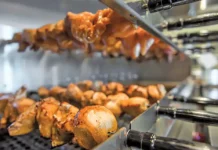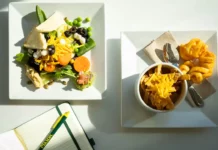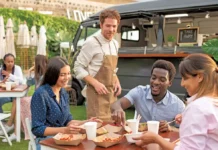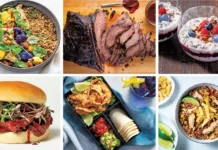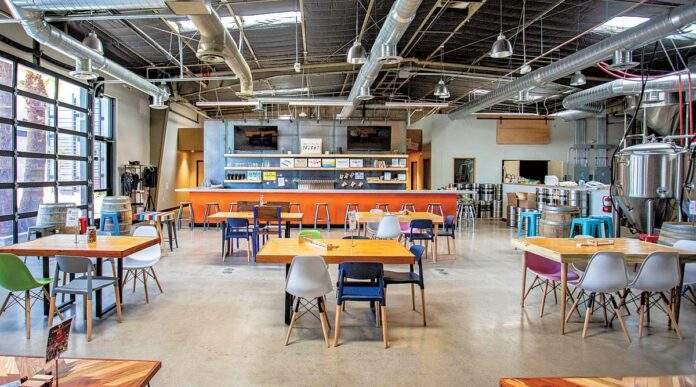
Article contributed by Brian Laubenthal, Aline Architectural Concepts
When we think of a good restaurant experience, we usually think about high-quality food and a beautifully designed space. Those are extremely important qualities in the success of a restaurant, but it is also important to recognize that restaurants occupy a space in the environment and we can craft amazing experiences while keeping that environment in mind.
Sustainability in restaurant design is becoming more important and popular as patrons want spaces that conserve our resources and avoid creating unwanted waste. As experts in restaurant design, our architecture firm has created many sustainable restaurant spaces that still foster an amazing dining experience. Here are a few tips for new restaurant owners looking to design sustainable restaurants.
Adaptive reuse is key to sustainability
One of the biggest causes of waste in our society is waste caused by construction. Demolishing old buildings and creating new ones means a lot of those materials end up in landfills. Most cities are full of old buildings such as warehouses that can be repurposed into restaurants.
Adaptive reuse is the design concept of reusing an existing structure and turning it into a new space. Using this method means restaurant owners can minimize the cost and waste of materials needed when building a new restaurant. By repurposing an existing building you are keeping demolished building materials from winding up in a landfill. Adaptive reuse often gives an undeserved building a new purpose as your restaurant brings new life into the community you serve. The best part about adaptive reuse is that almost any prefab metal building can be repurposed into a dining space. For example, our design of Phoenix Arizona brewery Roses by the Stairs was an adaptive reuse project. We transformed a 70-year-old building that previously housed a costume shop into a modern-day brewery.
Many city governments support adaptive reuse projects and depending on your state and city you may receive some tax benefits or discounts on some processing fees.
If you are looking to design a restaurant with the environment in mind, try to repurpose an existing structure instead of building something completely new.
Avoid fluff and focus on function
Every area of your restaurant should be designed with a purpose. Everything you add to your restaurant design should serve the function and flow of the space. Avoiding fluff and unnecessary garnish in the restaurant design means you are using fewer materials, saving energy, and in turn saving money.
Shifting the design focus to the entrance of a restaurant is one way to make an impact on customers as they walk into the space. Other areas that have less foot traffic can be then scaled back. Many restaurant owners are surprised at how unique their space can look using minimalist features while avoiding things such as super decorative ceilings and lighting features. Cutting down on some areas of your design can be beneficial to the environment as well as your budget as long as those changes stick with the integrity of your brand.
Use natural lighting and energy-efficient lighting
Keeping the lights on is a costly challenge for any restaurant owner. The electric bill at the end of the month is always going to be a big cost, especially if there’s wasted energy in the space. A sustainable restaurant seeks to keep the lighting cost at a minimum whenever possible while still maintaining a bright and enjoyable dining space.
Natural light is one of the best ways to ensure you are designing a restaurant that conserves energy while maintaining a well-lit dining room. Installing skylights throughout the restaurant, as well as designing entrances that allow a lot of light to shine through are ways to utilize sunlight. Natural light allows you to save energy while also integrates customers with the environment around them. Creating a symbiosis between indoors and outdoors with seamless exits and entrances for indoor and outdoor diners allows for even more integration with the surrounding environment.
When you do have to turn on the lights, installing lighting fixtures with a high Seasonal Energy Efficiency Rating (SEER) is a more sustainable way to light a space.
Sustainability is an important thing to consider when designing and building a restaurant. Having a sustainable space that helps improve the environment around us can help reduce cost to the restaurant owner in return The best part is that sustainable design does not mean you have to sacrifice designing a unique and premier dining space.
Brian Laubenthal is the owner and principal architect at Aline Architecture Concepts in Scottsdale, Arizona. Aline Architecture Concepts provides a complete suite of architectural services, but with a higher level of craft and understanding for the built environment. Learn more at his website.


















